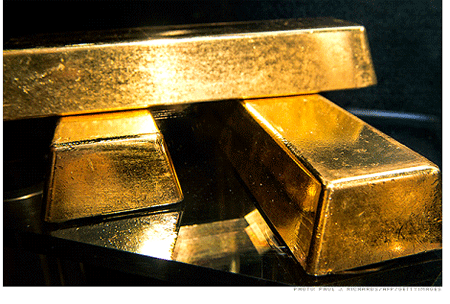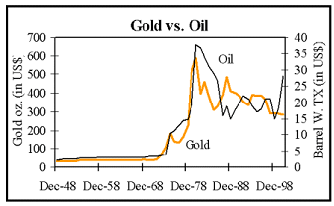 Gold futures offer an easy way to trade the commodity without actually buying and holding gold. The leading gold futures are highly liquid. The motive behind purchasing gold is to preserve and protect wealth. Traders in gold futures are on the lookout for any economic indicators that show a possible financial meltdown or other economic shock. But these are mostly buyers of gold who expect the gold price to increase in the future. Sellers will want the price to fall in a futures contract and any positive signs in the U.S. economy or sustained economic growth will lead to less demand for gold and a drop in its price. There is a risk in trading gold futures that has to do with speculating about the future price of gold. It is then vital to know which U.S. economy measures affect the gold price and how. Global economy measures should be observed when trading gold futures, but in this article, I will focus on just the U.S. economy measures. When looking at U.S. economy measures, the foremost thing that comes to mind is inflation. Inflation is regarded as gold’s best friend. Gold is really seen as a hedge against inflation or an alternative currency. I, like most investors, buy stocks, Treasury Inflation Protected Securities (TIPS) or gold when inflation is on the rise to offset its effects. The economic news must be examined and this can determine inflation in the future. Dollar devaluation will see an increased interest in gold futures with the price of gold expected to rise. Consumer confidence is another U.S. economy measure that needs to be taken into consideration when trading gold futures. The more upbeat people are, the less they will want to trade away their cash for gold and there will be a fall in gold futures. The industry group the Conference Board announced that its index of consumer confidence hit 70.3 this month after it was at 61.3 in August. Anything that shows that economic growth will increase has a negative effect on the price of gold. That should be your guideline when monitoring some of these U.S. economy measures for successful gold futures trading. This leads us to the next U.S. economy measure, which is interest rates that will be high when the consumer confidence is up. In the summer of 2011, quantitative easing QE2 saw to it that interest rates went up by year’s end and demand for the shiny yellow metal dropped. The consequence on gold futures trading was almost immediate with gold futures for June delivery going down by 0.2 percent. Nonetheless, I am very bullish about gold right now with the Fed’s recent QE3 program that economists at Goldman Sachs predict could cost as much as $2 trillion and continue till 2015. Furthermore, the Fed is also increasing its bullion reserves and anytime central banks do this it will see a spike in the demand for the precious metal. The opposite happens when interest rates are low because investors will find bonds to be a less attractive investment and prefer commodities like gold. Housing prices are important too. Investment in real estate can be compared to investment in gold, but real estate pays out dividends in the form of rent. When housing prices fall sharply, there is a tendency for gold to be sold to buy the more attractive real estate option. The price of gold has been dropping lately which is slightly against its long-term trend with some good housing data in the U.S. The Standard & Poor's/Case Shiller House Price index gives evidence for this with home prices across 20 U.S. cities going up 1.2 percent in July when compared with July 2011. Housing prices and real estate automatically lead me to the other investment that is expected to create wealth for households. This is the stock market. A savvy investor in the stock market would know that gold should be bought at low prices in a bull market and sold at high prices in a bear market. However, it seems to be that what causes an increase in gold price - rising inflation, low consumer confidence, high interest rates, and poor housing data - is what leads to a bear market. Still, there is a lot of historical evidence that illustrates a negative correlation between gold prices and the stock market. The major stock indices such as the S&P 500, Dow Jones Industrial Average and the Wilshire 5000 show that gold and stocks have a tendency to go in opposite directions. There have been too many occurrences in the past that confirm this with a very poor performance by stocks in 1973 that saw the price of gold go from $65 an ounce to $195 an ounce. Another noteworthy bear market happened in October 1987 and the gold price went beyond $500 per ounce. The recent financial crisis is still vivid in everyone's minds and I want to point out that gold hit $1000 per ounce at this time, which was its all-time high. I always look for confirmation from the stock market about which direction gold might possibly go. It is always wise to look at as many U.S. economy measures as possible.  Another one of these is the crude oil price that has a positive correlation with the gold price. An increase in oil prices will mean that oil revenues will rise and a lot of this gets invested in gold. The price of crude oil must be observed because it is another commodity in the futures market that has appreciated greatly in value and should continue to do so. It is also a very attractive substitute to holding gold. Right now, gold is at its all-time high at a real price of $1770 an ounce. Gold should continue to keep climbing unless the economy improves considerably or central banks stop supporting the financial markets with easing forevermore. I don't want a double dip recession, but when it comes to gold prices, it is really a case of demand and supply more than anything else.
|

|
|
|
|